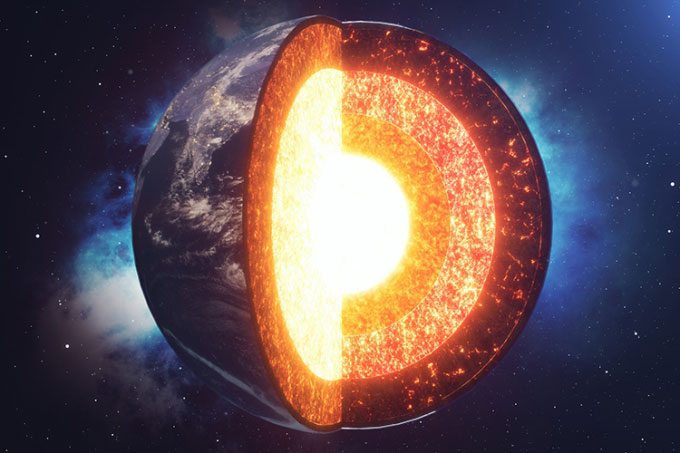Arizona State University reports that the high temperature and pressure at the boundary between the Earth’s core and mantle are conducive to diamond formation.
A research team at the School of Earth and Space Exploration at Arizona State University investigated the conditions at the boundary between the Earth’s metallic core and the magma in the mantle. They discovered that carbon in the liquid iron alloy of the Earth’s core can form diamonds, Newsweek reported on August 31. The new study has been published in the journal Geophysical Research Letters.

Illustration of the layers inside the Earth. (Photo: iStock)
“The stable form of carbon under the pressure-temperature conditions at the boundary between the Earth’s core and mantle is diamond,” said Dan Shim, a professor at Arizona State University and co-author of the study. Arizona State University refers to this as the “diamond factory.”
The interior of the Earth is divided into several layers, composed of different materials and states of matter. Beneath the thin crust is the mantle—a layer of molten rock that moves slowly, making up 84% of the planet’s total volume, according to National Geographic. It has temperatures ranging from 1,000 to 3,700 degrees Celsius. Deeper still are the outer and inner cores of the Earth. The outer core consists of liquid nickel, iron, and other elements, with temperatures around 4,500 to 5,500 degrees Celsius. The inner core is primarily made of solid iron due to extreme pressure and is as hot as the surface of the Sun.
In this new study, the team of experts explored how carbon in the outer core escapes from the liquid iron alloy, reacts with water, and forms diamonds. “The temperature at the boundary between the silicate mantle and the metallic core at a depth of about 2,900 km reaches approximately 3,900 degrees Celsius, high enough for most minerals to lose H2O in their atomic-scale structures,” Shim explained.
“At the estimated pressure at the core-mantle boundary, hydrogen mixed with liquid iron seems to reduce the solubility of other light elements in the core. As a result, the solubility of carbon—the element that can exist in the Earth’s core—decreases locally where hydrogen infiltrates the core from the mantle. Carbon escaping from the liquid outer core will become diamonds as it enters the mantle,” he added.
“Carbon is an essential element for life and plays a crucial role in many geological processes. The new discovery regarding the mechanism of carbon transfer from the core to the mantle will help us understand more about the deep carbon cycle within the Earth. This is even more fascinating because diamond formation at the core-mantle boundary may have been occurring for billions of years since the subduction process began on our blue planet,” commented Byeongkwan Ko, co-author of the study.


















































